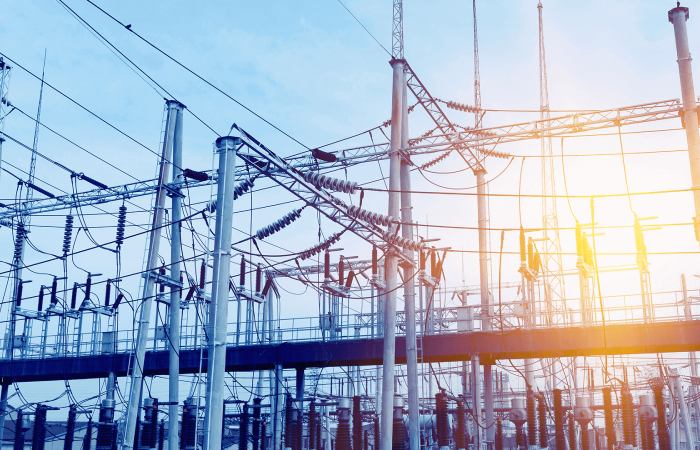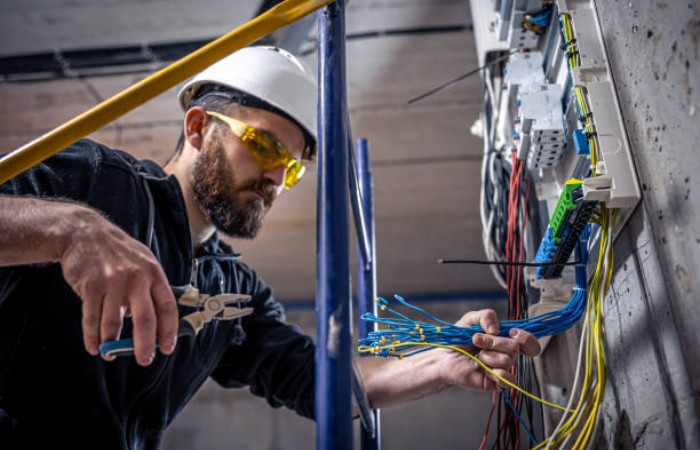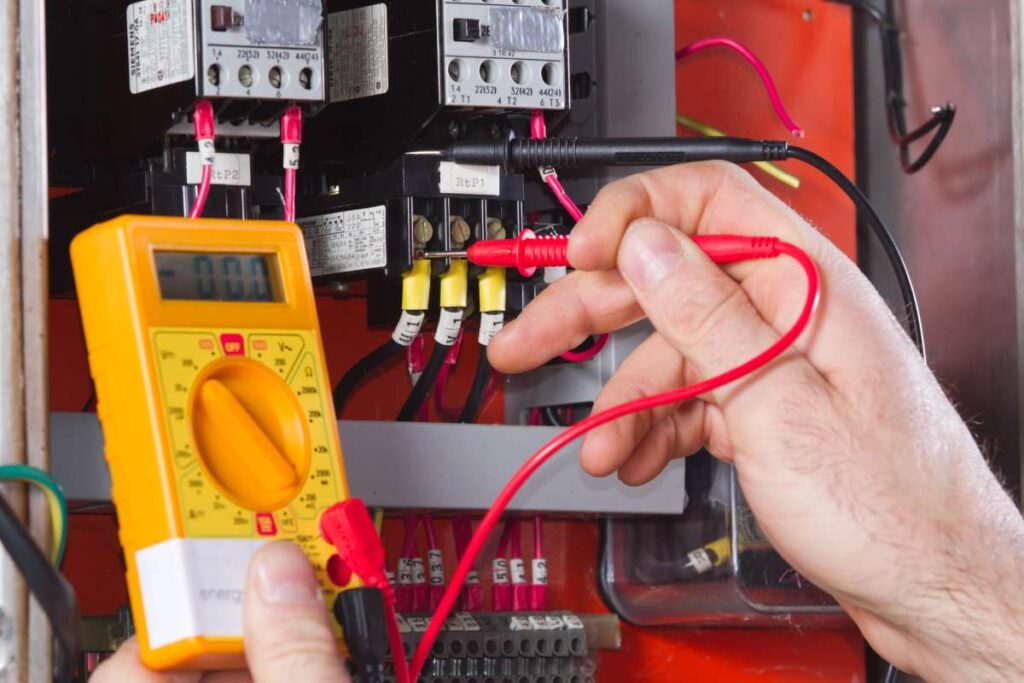Commercial electrical installations are crucial for powering various equipment and systems in businesses, offices, factories and retail outlets. These installations often involve complex wiring, system integration and high power requirements, making them more complicated than residential electrical work.
Although commercial electrical systems are designed to meet the unique needs of a business, they come with their own set of challenges. Understanding these issues is essential to ensure commercial projects’ safe, efficient, and compliant completion.
In this article, we’ll look at some of the most common problems encountered in commercial electrical installations and how commercial electricians solve them.
Complex wiring and Power Distribution

One of the significant challenges in commercial electrical installations is dealing with the complexity of electrical wiring and distribution. Commercial facilities require multiple circuits to handle large electrical loads for equipment, lighting, HVAC systems and other necessary infrastructure. Unlike residential installations, which typically have fewer circuits and power needs, commercial systems must be designed to distribute power
throughout the building, sometimes over multiple floors or zones.
Commercial electricians must ensure that wiring is appropriately sized and distributed to prevent overloading of circuits, reduce the danger of electrical fires, and meet code requirements. They should also design the system for ease of maintenance and future upgrades. Using three-phase systems, which are more efficient for commercial applications, further complicates cabling installation. Managing this complexity while maintaining safety and efficiency is one of the biggest challenges in commercial electrical installations.
Compliance with local codes and regulations
Another critical issue is ensuring the electrical installations complies with local building codes. Commercial electrical work is subject to strict safety, power, and design regulations. These regulations are regularly updated to reflect advances in technology and safety standards. For sample, the National Electrical Code (NEC) provides a set of standards for electrical installations in the United States, and local municipalities may have additional requirements.
Commercial electricians need to be aware of these codes and rules, which can vary depending on the location and type of business. Ensuring compliance often involves detailed planning, auditing, and documentation. Failure to meet code requirements can result in costly delays, fines and the need for expensive rework. Therefore, experienced commercial electricians should thoroughly understand the code and ensure that every aspect of the installation is up to code.
High load management and energy efficiency
Commercial buildings often require heavy loads to support machinery, lighting systems, computers, HVAC units, and other equipment. Managing these high power demands without overloading the system or risking power outages is a significant challenge. Load balancing and proper power distribution are key to maintaining a reliable electrical system in a commercial environment.
In addition, businesses are increasingly prioritizing energy efficiency as part of their sustainability efforts. This could include integrating lighting, energy-efficient heating and cooling systems, or introducing renewable energy sources such as solar panels. Designing electrical installations capable of handling high power demands and optimizing them for energy efficiency can be complex and requires commercial electricians to have expertise in energy-efficient technologies and systems.
Coordination with other specialists
Coordination with other specialists such as plumbers, HVAC technicians and construction workers is often required in commercial electrical installations. Electrical systems must be integrated with plumbing, ventilation, and other mechanical systems, which can lead to conflicts if not appropriately handled. For example, electrical
wiring should not interfere with water pipes or air ducts; space should be left for necessary connections and access points.
This coordination requires good communication and planning between contractors to ensure the electrical system is installed correctly without interfering with other work. Commercial electricians must be able to work as part of a team to minimize delays and ensure all systems function correctly upon completion.
Limited space for cables and equipment Electrical Installations

Many commercial premises, especially older buildings, have limited space to install electrical systems. This can be incredibly challenging when installing electrical panels, transformers, circuit breakers, and cables in tight or hard-to-reach areas. Poorly designed designs or insufficient space can complicate installation, increase labour costs, and result in inefficient systems.
Commercial electricians often need to be creative when designing the layout of an electrical system, especially in older buildings where the existing infrastructure may require modification to meet modern electrical needs.
Retrofitting old buildings to meet current electrical standards while ensuring safety and functionality can be one of the most challenging aspects of commercial electrical installations.
Safety issues and hazard management Electrical Installations
Electrical installations present a number of safety risks, and commercial electricians must take great care to ensure that the work is completed safely. These risks include electric shock, fire, and injury when working in confined spaces or with heavy equipment. Appropriate safety measures, including personal defensive equipment (PPE), are necessary to minimize these risks.
In addition, commercial electricians must manage potential hazards posed by building electrical systems, such as exposed wiring, faulty grounds, or outdated equipment. Ensuring the safety of workers, property, and future building occupants requires careful installation and thorough post-completion testing. Proactively addressing safety issues is one of the most important challenges commercial electricians face during installation.
Communication with clients and project managers Electrical Installations
Effective communication with clients and project managers is essential throughout the commercial electrical installations process. The scope of work, project timelines and cost considerations should be well understood by all parties involved. Poor communication can lead to delays, unexpected costs, or dissatisfaction with the final results.
Commercial electricians should keep all stakeholders informed about the project’s progress, issues encountered, and changes that could affect the overall timeline or cost. They should also be willing to provide updates, answer questions, and offer solutions to any issues that arise during installation.
Conclusion
Commercial electrical installations are essential to keeping businesses running smoothly, but they come with unique challenges. Commercial electricians face various obstacles, from managing complex electrical wiring
systems and maintaining regulatory compliance to handling heavy loads and coordinating with other trades. By addressing these challenges through careful planning, expert knowledge, and effective communication,
commercial electricians can ensure that electrical systems are installed safely, efficiently, and reliably. Whether you’re working on a new building or upgrading an existing system, hiring experienced commercial electricians
who can handle these challenges and provide a high-quality electrical system that fits your business’s needs is important.


